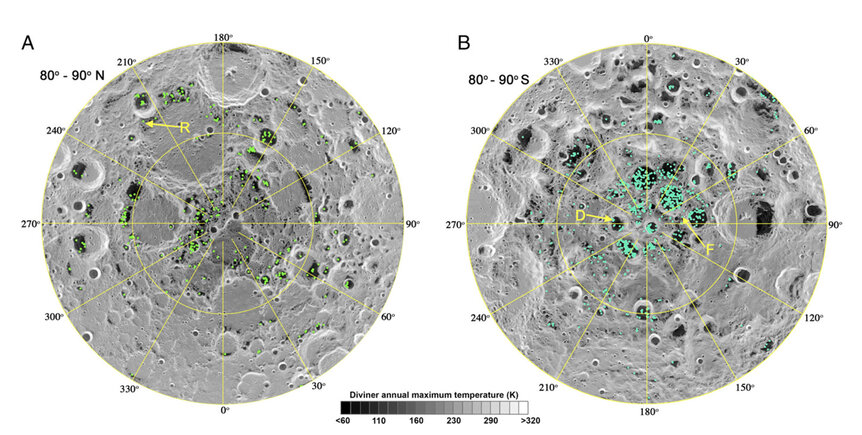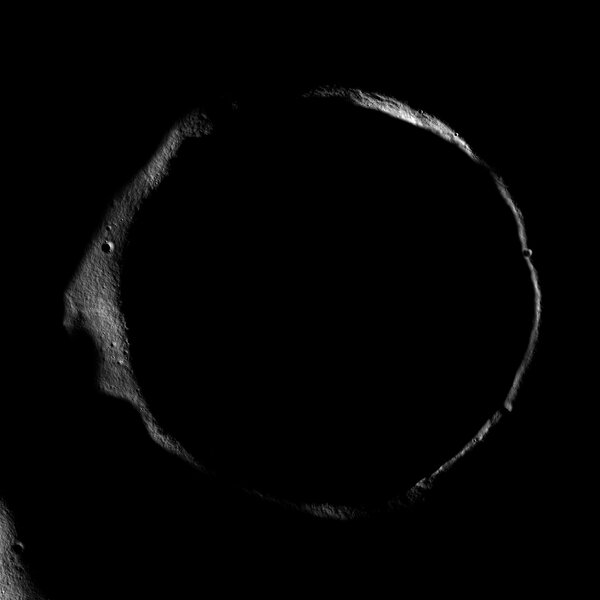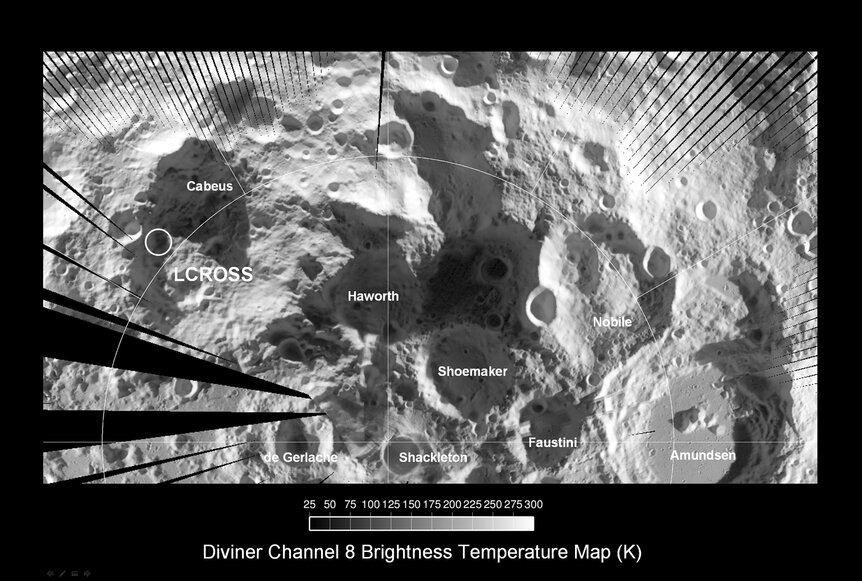Create a free profile to get unlimited access to exclusive videos, sweepstakes, and more!
CONFIRMED: Water ice on the Moon!

For the first time, planetary scientists have unambiguously and directly detected water ice on the surface of the Moon at its north and south poles.
Whoa.
To be clear, we've had pretty good evidence of this before, but it was either indirectly done, or wasn't completely unambiguous. These new observations change all that!
I'll describe how they did it in a moment. But their results are pretty cool. Literally!
Looking at "cold traps" — places near the poles that are dips in the local topography, like crater floors, and never receive direct sunlight and therefore stay very cold — they found that 3.5% of all the traps show the evidence for water ice within a few millimeters of the surface, and in some places the water represents 30% by weight of the material there. All of these traps were within 20° latitude of the poles, with the majority (90%) being within 10° of the poles. All of these sites have temperatures that never get above -163°C (-260° F).
That's pretty amazing. It's really weird to think that the moon, with no air and nothing to protect the surface from the blazing Sun, can have ice, let alone ice on the surface! But they do have protection: the Moon itself.
Near the poles, the Sun is always low to the horizon. If you get a deep crater, say, then there can be spots along the floor that the Sun never gets high enough to shine on. They are perpetually dark, and very cold. We know comets and asteroids can contain quite a bit of water, and that can be released as a vapor when they impact the Moon. If there's an impact near a deep polar crater, some of that water may settle there. On the surface exposed to sunlight the water won't freeze, and will eventually get broken up by ultraviolet light. But if it gets into a cold trap, well, it's trapped by the cold.
The team of scientists in the new research used data from the Moon Mineralogy Mapper (MMM), a NASA-built instrument on the Indian Chandrayaan-1 spacecraft, which observed the Moon for nearly a year starting in late 2008 (systemic issues with the spacecraft ended the mission early, though it still orbits the Moon today — it was quite an achievement for India, especially given that this was their first lunar mission).
MMM was a spectrometer. That means that instead of taking just pictures, it took the light from a target and sorted it by wavelength (color). Raindrops do the same thing when you see a rainbow; red light bends inside the drop less than blue, so the drop sorts the colors of light. Instead of just seven or so colors, though, a spectrometer has much finer resolution, and can sort hundreds or thousands of colors.
That's critical. Minerals absorb and reflect light differently depending on their wavelength, and that can be used to ID them. Water ice, for example, has very specific properties such that when you look at reflected infrared light — which MMM can detect — it absorbs light at 1.3, 1.5, and 2 microns wavelength (the reddest color you can see is about 0.75 microns, so these wavelengths are what we call near infrared).
MMM observed locations all over the Moon, including near the poles. The scientists looked at the data from where the surface reflected light, and checked for absorption at all three of those wavelengths. They found thousands of places where that occurred*!
Now, hang on a second, I hear you say (note: I cannot actually hear that, but I can infer it). If the Sun doesn't shine in these cold traps, how can MMM see light from them?
Good question! It turns out there is some light there, reflected from nearby features like crater walls or hills that are in sunlight. It's much feebler light, but it's enough for MMM to get good data.
And the results are what I outlined above: Lots of water near the poles in cold traps.
They got so much data that they could draw some interesting conclusions. For example, there was more ice at the Moon's south pole than at the north pole; this is likely because there are more and deeper craters there. The ice clustered in those craters, whereas at the north pole the ice was more spread out.
Not only that, but they found no ice in cold traps that are less than about 2 billion years old, whereas older cold traps did have ice. Why the age difference? They speculate that this may have to do with an event theorized to have occurred around that time: Volcanism in the gigantic region called Oceanus Procellarum may have shifted the Moon's balance, throwing off its rotation axis.
Think of it this way: Take a perfectly balanced top, one that spins beautifully, and stick a small piece of clay on one side. The top will now wobble as it spins. The same thing may have happened with the Moon! The volcanic activity caused it to wobble, shifting the axis. That would have changed the angle of sunlight at high latitudes, forming new cold traps.
If that's the case, the location of the ice implies that the process to trap ice is very slow. None (or no appreciable amount) has accumulated since that event! I'll note that this chain of logic is self-consistent, though not proven. Think of this as a cool idea that may pan out, or may not, but could use more investigation.
Interestingly to me, they didn't see any more or less ice where the craters were illuminated by Earthshine. Have you ever looked at the new crescent Moon, and faintly seen the dark side of the Moon glowing softly? If you were standing on that part of the Moon, you'd see a nearly full Earth in your sky, shining down dozens of times brighter than the full Moon does on Earth! It's easily bright enough to read by, but apparently doesn't heat the Moon appreciably, or else we'd see less ice in the craters where the Earth shines. I suppose that's not surprising, but it's neat to see it borne out.
This is pretty exciting! Scientifically it's cool because it tells us more about the Moon and the solar system, about how impacts have changed the surface compositions of airless objects, and gives us insight into the lunar surface. It also confirms many, many previous observations saying (or very strongly implying) there's water ice at the poles.
But practically speaking it's exciting because this furthers the idea that future human lunar exploration can support itself by finding water in situ. Water is extremely heavy and difficult to lug around on rockets, so being able to use water that's already sitting there on the Moon — and, as these results show, so very close to the surface, just millimeters deep — saves a vast amount of fuel, effort, and money.
The Moon is right there, just a few days' travel away, and the more we learn about it the more enticing it becomes for exploration. I think we should go back.
*To be fair, you might expect this to happen randomly at some places just due to random chance. They checked this, creating fake spectra in their computers and running it through their analysis software. They found that the fake data matched what you'd expect from water ice only about once for every million spectra generated, whereas the real spectra matched what you'd expect about 0.2% of the time, far more often, and therefore almost certainly not due to random chance.





























